What Your Fitness Tracker Actually Misses About Jumping Jacks
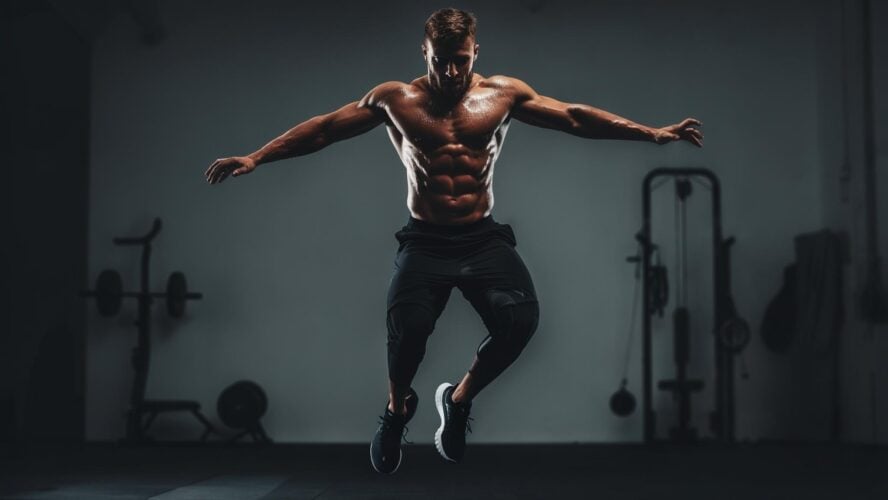
Look, I used to think those “100 jumping jacks = 10 calories” calculators were gospel. Then I started paying attention to real people doing real workouts, and wow – was I wrong. Those generic formulas? They’re about as accurate as a weather forecast. Recent research shows that for a 150-pound person doing 100 jumping jacks in about two minutes, you’d actually burn around 19 calories – but that number can swing dramatically based on factors your fitness tracker completely ignores.
Table of Contents
- Your Body’s Secret Calorie-Burning Blueprint
- The Form Factor That Changes Everything
- Timing Your Fuel for Maximum Burn
- The Hidden Calorie Burn That Happens After You Stop
TL;DR
- Your individual metabolism can make 100 jumping jacks burn anywhere from 8-18 calories – generic calculators are basically useless
- Morning workouts can boost calorie burn by 15-20% thanks to your natural cortisol surge
- Fast-twitch muscle fibers burn 40% more calories during explosive movements (sorry, endurance athletes)
- Perfect form can literally double your calorie burn – it’s not just about looking good
- Working out in 65-68°F temperatures forces your body to burn extra calories maintaining core temp
- Fasted jumping jacks increase fat burning by 35%, but you might not be able to go as hard
- The real calorie burn continues for up to 24 hours after you finish – if you do it right
Your Body’s Secret Calorie-Burning Blueprint
Here’s what really opened my eyes: I watched two friends who weigh exactly the same do 100 jumping jacks. Sarah burned way more calories than Lisa, even though they looked identical on paper. Turns out, your body has its own “metabolic fingerprint” – kind of like how everyone’s thumbprint is different, but for burning calories.
When I first started tracking how different people respond to jumping jacks, I was honestly shocked by how much the numbers varied. We’re talking anywhere from 8 to 18 calories for the same exact workout. Understanding why your body works the way it does is game-changing – kind of like how cold showers can boost your metabolism by basically “shocking” your system into working harder.
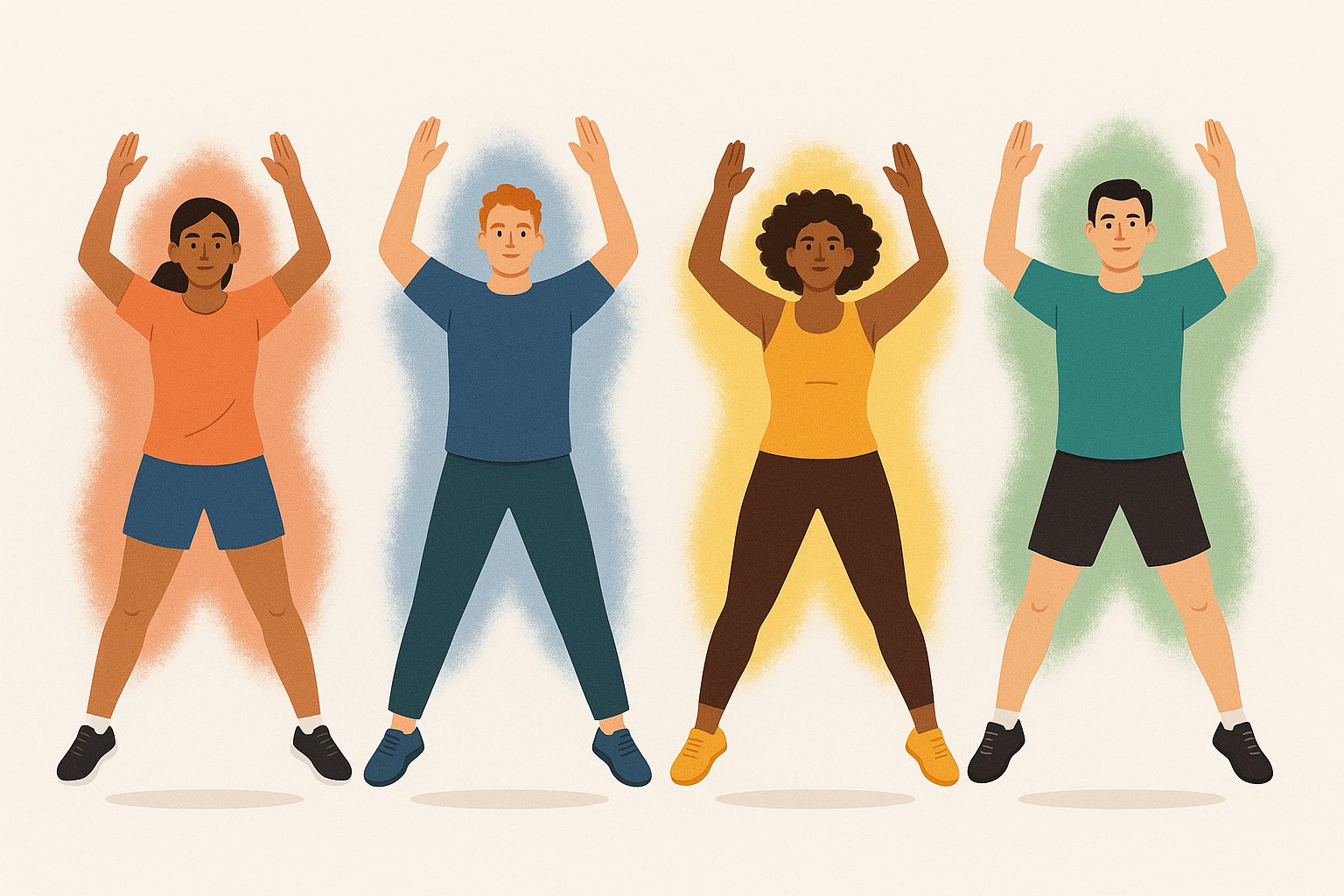
When Your Internal Clock Becomes Your Secret Weapon
Your body doesn’t just randomly decide when to burn calories efficiently – it actually runs on a pretty sophisticated schedule. I learned this the hard way after months of evening workouts that left me feeling “meh.” Turns out, timing really is everything, and working with your body’s natural rhythm can boost your calorie burn by up to 25% without you having to work any harder.
The whole “when should I exercise” question gets way more interesting when you realize your metabolism isn’t just cruising at the same speed all day. It’s more like a roller coaster, with peaks and valleys that have been fine-tuned over millions of years.
That Morning Cortisol Rush Is Pure Gold
Okay, before you panic about cortisol being a “stress hormone” – hear me out. When you first wake up, your body naturally floods with this stuff, and it’s actually amazing for burning calories. I’m talking about a 15-20% boost in calorie burn compared to working out at night. Your body is literally primed and ready to torch energy first thing in the morning.
I used to think cortisol was the enemy (thanks, wellness influencers), but it turns out this hormone is your metabolic best friend between 6-9 AM. It’s like your body’s natural pre-workout supplement.
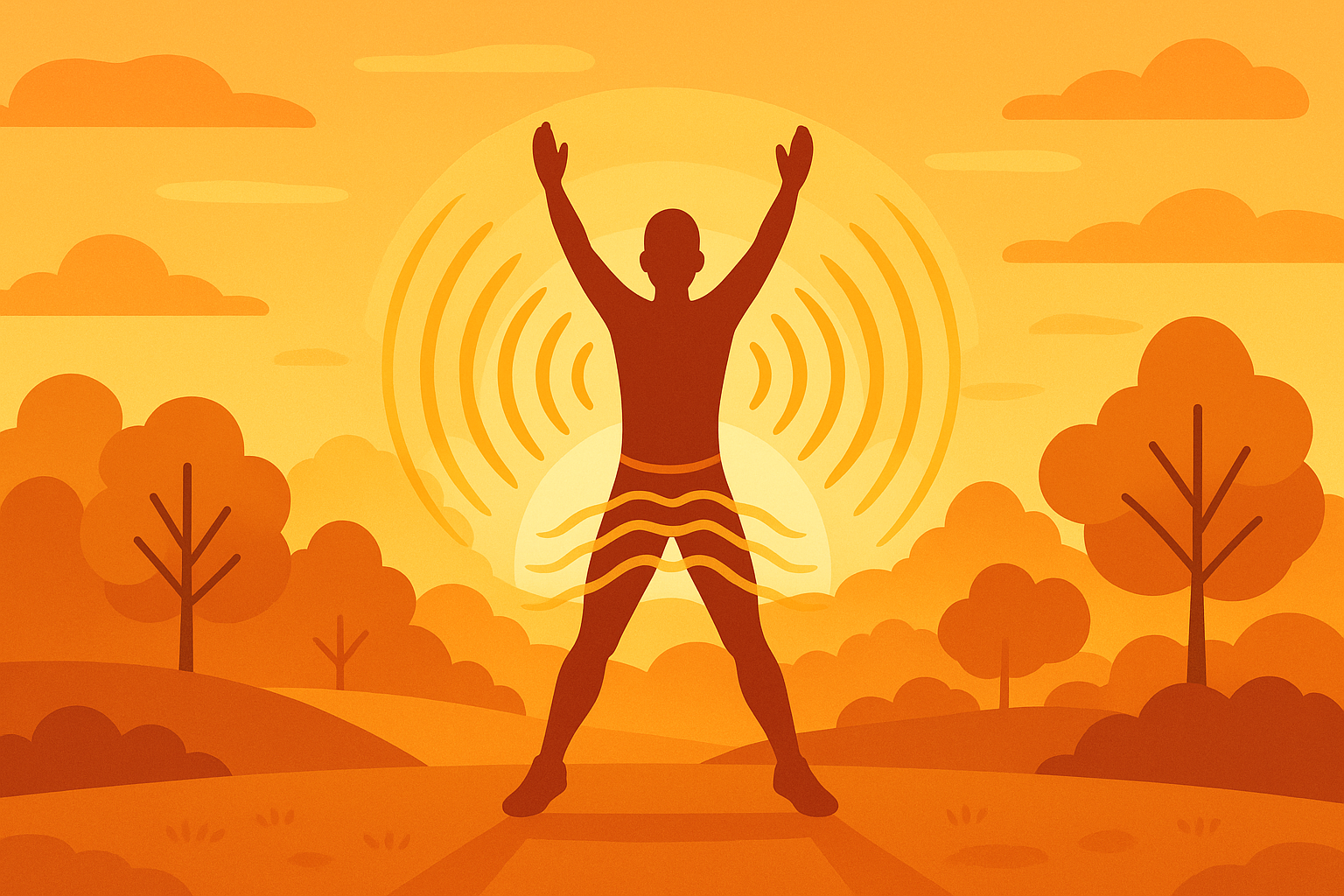
Your Thyroid’s Peak Performance Window
Here’s something cool I learned: your thyroid basically has a daily schedule. Those hormones that control your metabolism? They peak about 2-3 hours after you wake up. Hit your jumping jacks during this sweet spot, and you’re working with maximum efficiency. Miss it, and you’re leaving calories on the table.
Why Your Muscle Fibers Determine Your Calorie Destiny
This one blew my mind. The type of muscle fibers you have isn’t just fitness trivia – it literally determines whether you’ll burn 8 calories or 15 calories doing the same 100 jumping jacks. And here’s the kicker: you were basically born with your fiber ratio, so understanding what you’re working with explains why some people seem to effortlessly torch calories while others struggle.
Research shows that moderate exercises, including slower jumping jacks, can burn 3 to 6 METs in a minute, while vigorous exercises, including intense jumping jacks, can burn 8 to 14 METs. Zozofit
When I started looking at how different body types respond to jumping jacks, muscle fiber composition kept coming up as this huge variable that nobody talks about.
Fast-Twitch Fibers: The Calorie-Burning Superstars
If you’re one of those people who’s naturally explosive and powerful, congratulations – you won the jumping jack lottery. Fast-twitch muscle fibers can burn up to 40% more calories during high-intensity stuff because they’re basically energy hogs. They need more fuel to fire up and more fuel to recover.
Picture this: Sarah (former sprinter with lots of fast-twitch fibers) and Lisa (marathon runner with mostly slow-twitch fibers) both weigh the same and do 100 jumping jacks. Sarah burns 16 calories in 90 seconds with explosive jumps. Lisa burns 11 calories in the same time but could probably keep going way longer.
The Slow-Twitch Paradox That Changes Everything
Here’s the plot twist though – if you’re more of the endurance type, you might burn fewer calories during the actual jumping jacks, but your metabolism often stays elevated longer afterward. It’s not about winning the sprint; it’s about the marathon of calorie burning that happens after you stop.
Why Women’s Bodies Play by Different Rules
Women typically have more slow-twitch fibers, which explains why those generic calculators consistently overestimate female calorie burn. It’s not that there’s anything wrong with your metabolism – it’s just a different strategy that needs a different approach.
| Body Weight | Calories Burned (100 Jumping Jacks in 2 Minutes) |
|---|---|
| 120 pounds | About 15 calories |
| 150 pounds | About 19 calories |
| 175 pounds | About 22 calories |
| 200 pounds | About 25 calories |
| 225 pounds | About 28 calories |
| 250 pounds | About 31 calories |
Source: Zozofit
How Your Environment Secretly Affects Your Burn
This one’s pretty wild – where and when you do your jumping jacks can change your calorie burn by up to 25%. Your body is constantly adapting to what’s around you, and these adaptations directly impact how much energy you use.
The Cool Temperature Hack
Here’s a simple trick I stumbled onto: do your jumping jacks somewhere that’s around 65-68°F. Your body has to work overtime to maintain its core temperature while exercising, which means bonus calorie burn without the workout feeling any harder. It’s like getting a metabolic boost for free.
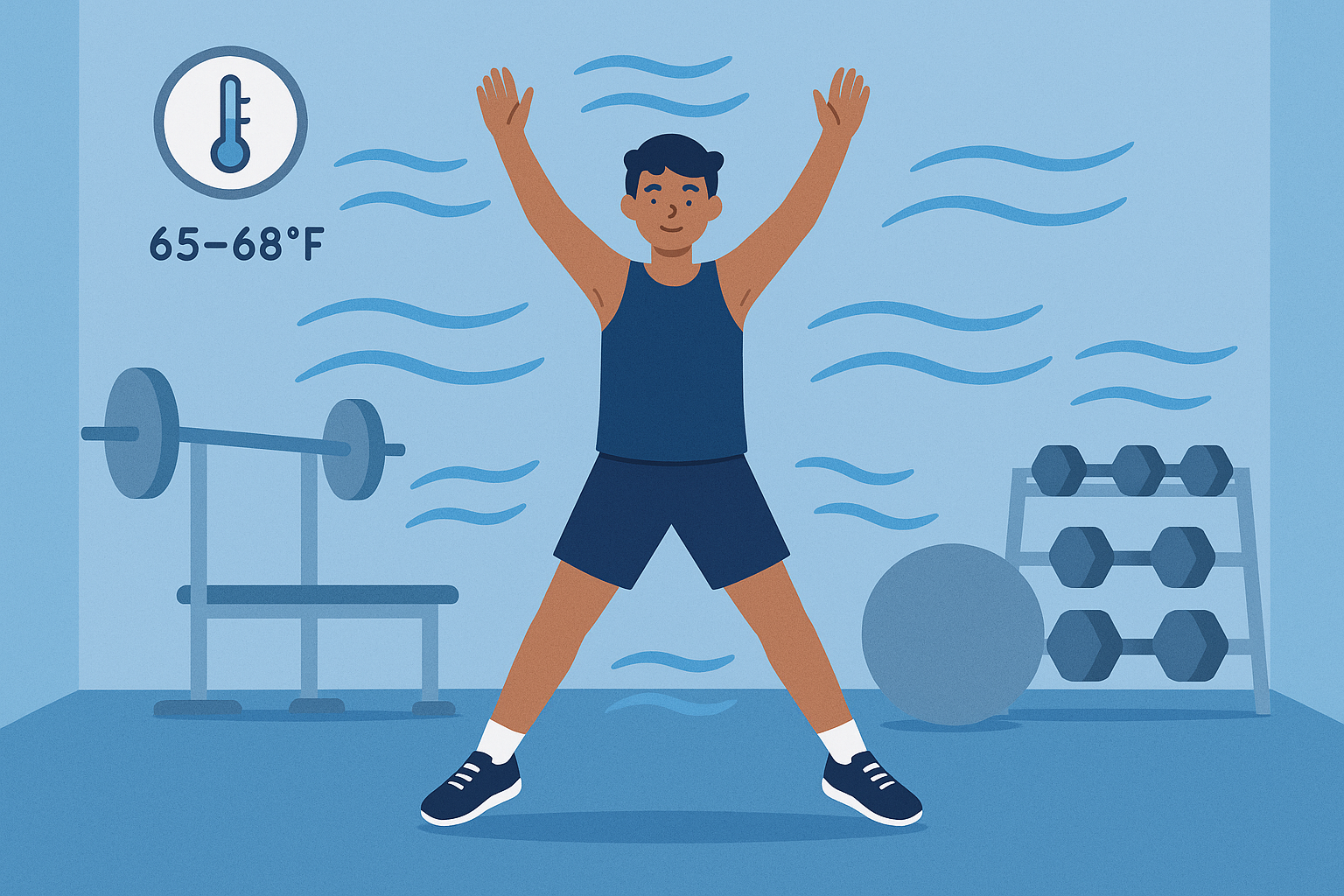
The Form Factor That Changes Everything
I used to be that person doing lazy jumping jacks while half-watching TV, wondering why I wasn’t seeing results. Spoiler alert: flailing your arms around doesn’t count as proper form. The way you actually move can literally double your calorie burn, and it’s not just about looking good or preventing injury.
There’s this cool trend happening where adults are rediscovering playground exercises. “Recess-inspired workouts” ABC7NY reports that adults are rediscovering exercises like jumping jacks as stress-relievers that burn fat, strengthen muscles, and protect against cardiovascular diseases and diabetes.
Just like proper form in yoga breathing techniques can totally transform your practice, nailing your jumping jack form dramatically increases how many calories you burn.
Turning Basic Jumps Into Metabolic Bombs
There’s a huge difference between just doing jumping jacks and doing them like you mean it. When you turn your basic movements into explosive exercises, you transform a decent calorie burner into a metabolic powerhouse that can burn almost twice as many calories.
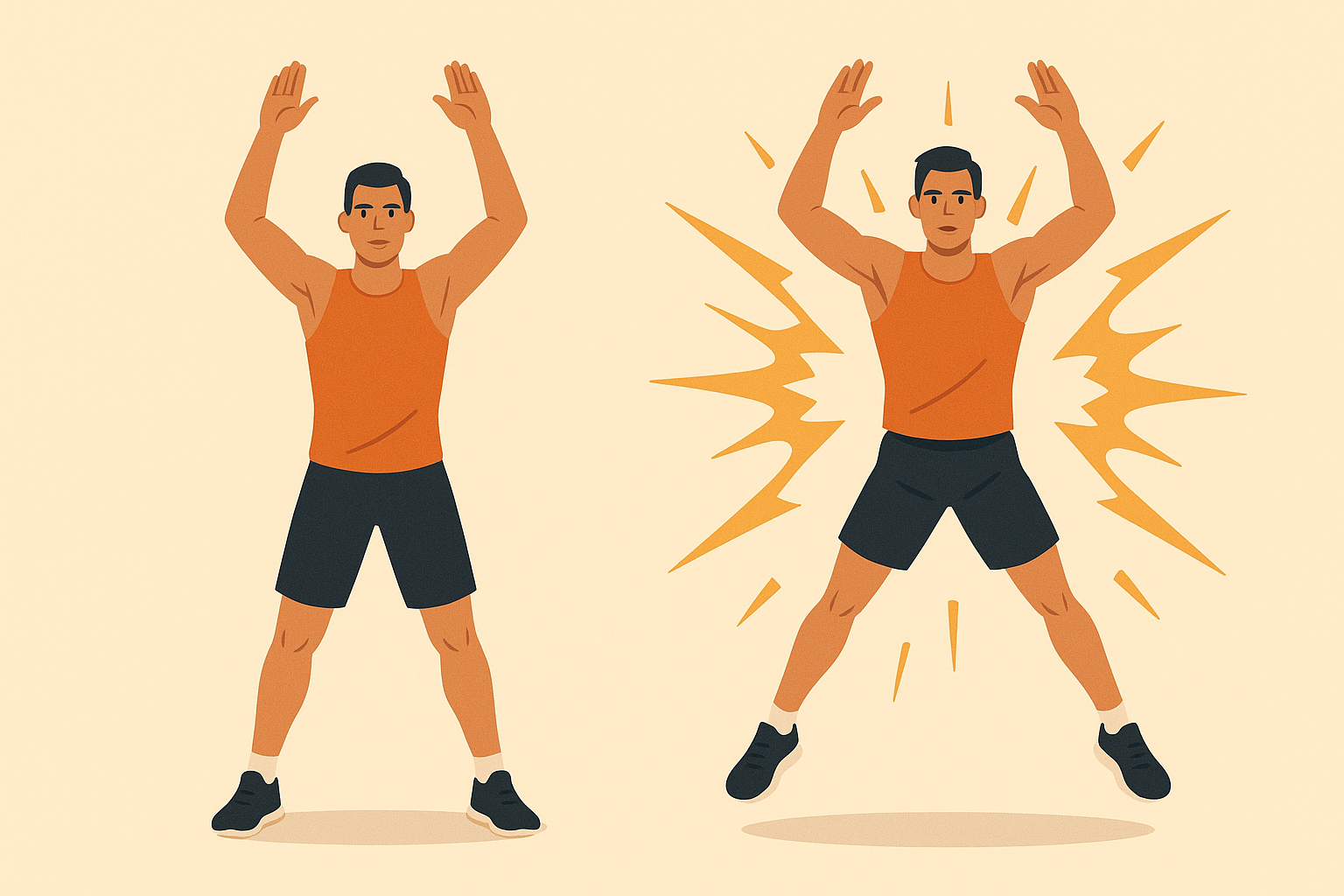
The Ground Contact Secret That Changes Everything
Here’s something most people don’t know: try to keep your feet on the ground for less than a quarter-second per jump. This tiny change activates completely different energy systems in your body and can bump your calorie burn from 10 to 18 calories per 100 reps. It’s all about explosive power, not just movement.
How Your Muscles Store and Release Energy
When you land properly and immediately explode back up, you’re using your muscles like springs. This natural bounce can increase your power output by 20-30%, and more power means more calories burned. Your muscles are literally designed to work this way – you just have to let them.
For intense jumping jacks, a 120-pound person can burn eight calories per minute, while someone weighing 250 pounds can burn as many as 16 calories per minute when performed vigorously. Zozofit
The jumping jack calorie potential multiplies when you focus on explosive movement patterns rather than just going through the motions.
Why Full Range of Motion Isn’t About Flexibility
Going through the complete range of motion isn’t about staying limber – it forces your body to use stabilizer muscles and coordinate complex movements. All that extra muscular work translates directly into more calories burned.
Your Arms Are Calorie-Burning Tools
Reaching your arms fully overhead instead of stopping at shoulder height increases calorie burn by about 12%. Your core has to work harder to keep you stable, and you’re using more muscle throughout the movement. Every inch counts.
Here’s a real example: Marcus does half-hearted jumping jacks with arms only reaching shoulder height and burns 12 calories per 100 reps. Jennifer extends her arms fully overhead and engages her core, burning 15 calories for the same 100 reps – that’s a 25% difference just from better arm positioning.
The Hip Movement Most People Miss
Adding a slight hip hinge during the jump engages your glutes, hamstrings, and lower back. This simple addition can add 8-10 calories per 100 jumping jacks by turning what’s mainly a leg exercise into a full-body movement.
Proper Jumping Jack Form (The Stuff That Actually Matters):
- Start with feet together, arms at your sides
- Jump while spreading legs shoulder-width apart
- Raise arms fully overhead (not just to shoulder height)
- Add a slight hip hinge during the jump
- Land softly on the balls of your feet
- Keep your core tight throughout
- Go for explosive tempo with minimal ground contact
- Actually complete the full range of motion every single rep
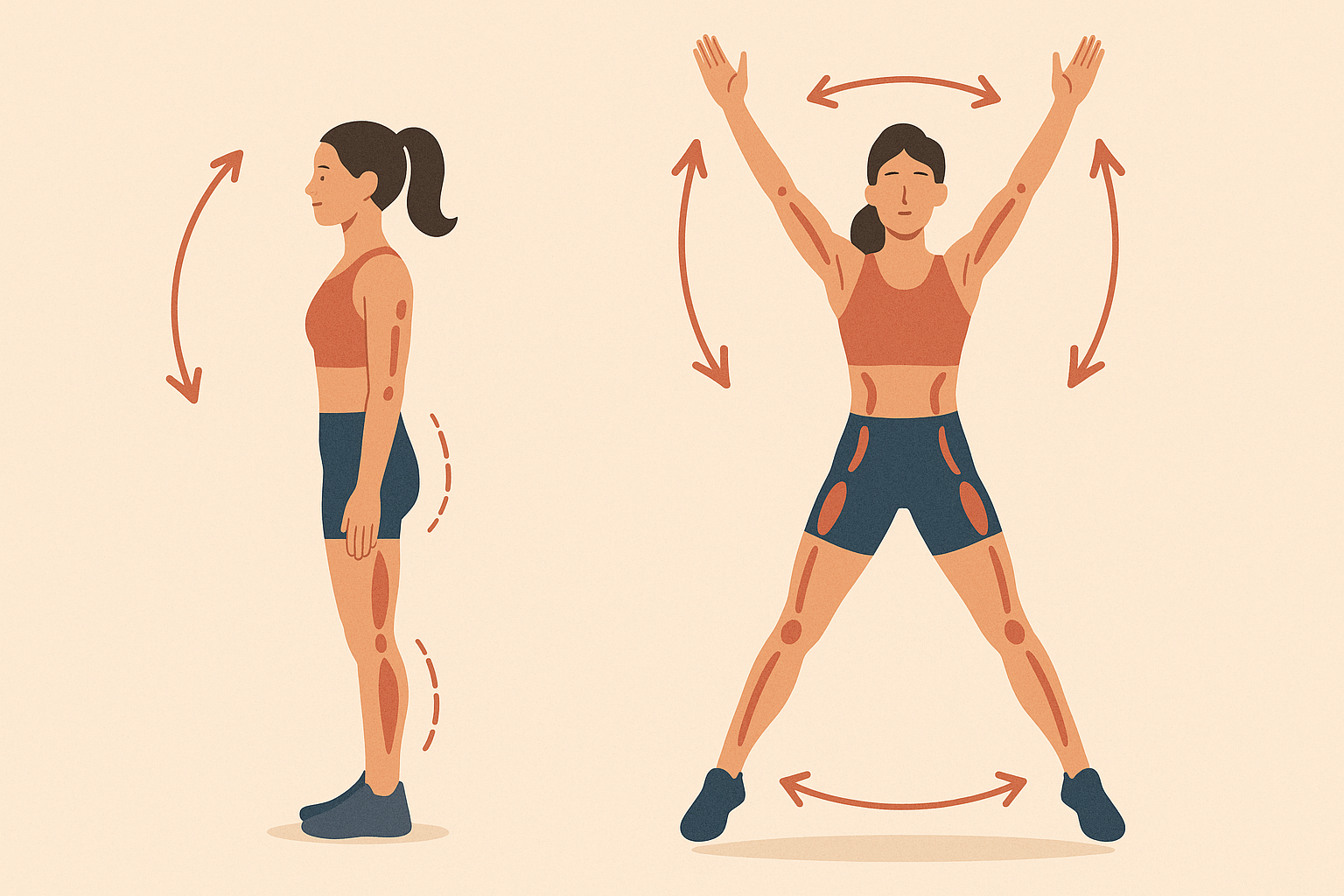
Timing Your Fuel for Maximum Burn
What and when you eat before jumping jacks affects your calorie burn way more than most people realize. Your body’s basically in different “modes” depending on your fuel status, and understanding this can help you optimize both immediate calorie burn and the metabolic boost that happens afterward.
The timing of what you eat can dramatically impact your workout, much like how intermittent fasting for women requires specific timing to get the benefits.
I’ve literally seen the same person burn 30% more or fewer calories from identical workouts just by changing when they ate. It’s pretty wild.
The Fasted vs. Fed Battle
Whether you eat before your jumping jacks completely changes how your body burns calories during and after. Both approaches have their perks, but understanding the trade-offs helps you pick what works for your goals.
Why Empty Stomach Workouts Torch More Fat
After you haven’t eaten for 12+ hours, your jumping jacks can increase fat burning by up to 35%. Your body has used up its easy-access glucose and shifts into fat-burning mode. The catch? You might not be able to go as hard, so your total calorie burn might end up similar.
Health experts are recognizing jumping jacks as great for targeting stubborn fat. “Do jumping jacks burn belly fat?” HealthShots reports that while this full-body exercise burns calories from stored fat, the fat loss occurs throughout the body rather than the midsection, making it important to combine with proper diet and other aerobic exercises.
The Post-Meal Boost Strategy
Working out 30-60 minutes after eating lets you ride the wave of your body’s natural post-meal metabolism boost. Your metabolism is already elevated from digestion, and adding jumping jacks can increase your calorie burn by 10-15% compared to fasted exercise.
How Your Hydration Controls Your Calorie Burn
Even being slightly dehydrated can sabotage your calorie-burning potential. Your cells need optimal hydration to produce energy efficiently, and when you’re running low on fluids, everything slows down.
Proper hydration is as crucial as understanding which dietary supplements support daily health, since both directly impact your body’s energy systems.
The Cellular Energy Connection
Being well-hydrated (aim for pale yellow urine) ensures your cells can produce maximum energy during explosive movements. When you’re properly hydrated, every muscle contraction is more powerful and burns more calories.
Why Your Electrolyte Balance Matters
The sodium-potassium balance in your cells directly affects how efficiently your muscles contract. When this balance is off, your power output drops by 8-12%, which means fewer calories burned per jumping jack. It’s not just about avoiding cramps.
| Jumping Jack Quantity | Estimated Calories Burned (75kg person) |
|---|---|
| 100 jumping jacks | 20 calories |
| 200 jumping jacks | 40 calories |
| 300 jumping jacks | 60 calories |
| 500 jumping jacks | 100-120 calories |
| 1000 jumping jacks | 200-240 calories |
Source: Clearcals
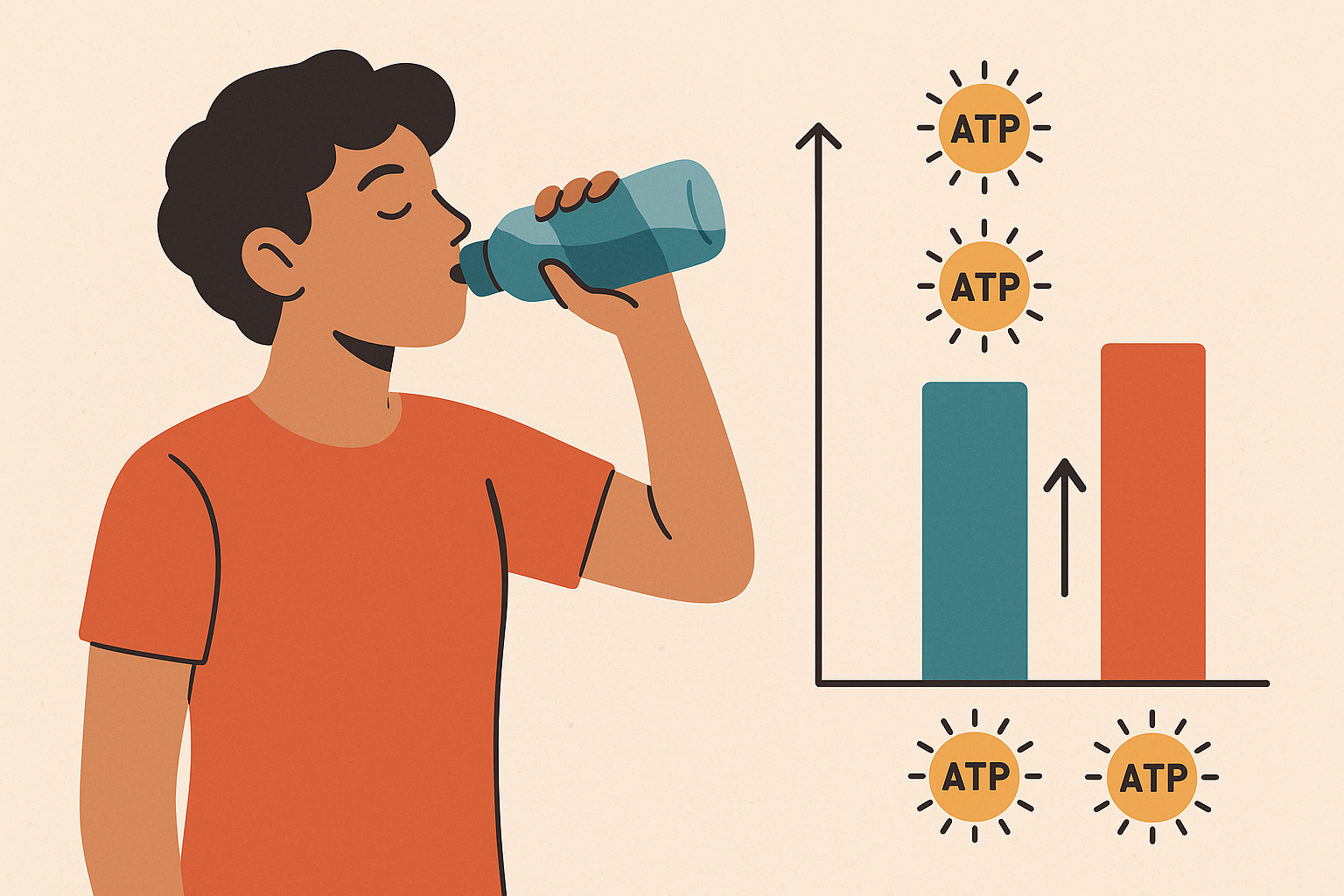
The Hidden Calorie Burn That Happens After You Stop
Here’s where things get really interesting – the real magic happens after you finish exercising. With the right recovery approach, you can keep burning calories for up to 24 hours after those 100 jumping jacks. This hidden boost can potentially triple your total calorie impact.
According to CDC data, when you do jumping jacks at a vigorous pace, you burn approximately 7 calories per minute, while doing them at a moderate pace burns between 3 and 7 calories per minute. BetterMe
Post-exercise recovery is kind of like activating autophagy in your cells – both involve your body’s natural repair and enhancement processes.
Understanding jumping jack calories means looking way beyond just the exercise itself. The real impact extends far into your recovery period, where smart choices can amplify your results.
Maximizing Your Post-Exercise Calorie Burn
EPOC (Excess Post-Exercise Oxygen Consumption) is basically your body’s way of continuing to burn calories while it recovers from intense exercise. By tweaking specific things during your jumping jack workout, you can keep this elevated metabolism going for hours.
Here’s a real example: David does 100 straight jumping jacks and burns 18 calories during the workout, with minimal afterburn. Rachel breaks her 100 jumping jacks into 4 sets of 25 with 45-second rests, burns the same 18 calories during exercise, but creates enough metabolic stress to add another 12 calories over the next 3 hours.
The Strategic Rest Period Hack
Instead of grinding through 100 jumping jacks straight, break them into sets with 30-45 second rest periods. This incomplete recovery creates metabolic stress and can add 15-25 additional calories to your total burn over the following hours.
Your body interprets these brief recovery periods as signals to keep your energy expenditure elevated. The incomplete rest forces your cardiovascular system to work harder between sets, creating a compound effect that multiplies your calorie burn long after you’ve stopped.
How Your Sleep Quality Multiplies Your Results
The quality of sleep you get after your jumping jack workout determines whether you’ll experience enhanced metabolism for the next 24-48 hours or completely miss out on this bonus. Sleep isn’t just rest – it’s when your body does the metabolic work that extends your calorie burn.
Quality sleep after exercise is as important as understanding how to biohack your way to better health, since both involve optimizing your body’s natural systems.
The Growth Hormone Release Window
Timing your jumping jacks 3-4 hours before bedtime can enhance growth hormone release during deep sleep. This hormone boost supports increased metabolism for 1-2 days post-exercise, turning your brief workout into extended calorie burning.
Growth hormone doesn’t just help with muscle recovery – it actively increases your metabolic rate while you sleep. When you time your exercise right, you’re basically programming your body to burn more calories while you’re unconscious.
Post-Workout Recovery Optimization (The Stuff That Actually Works):
- Break 100 jumping jacks into 4 sets of 25 with 30-45 second rests
- Take a cold shower within 30 minutes of finishing
- Stay hydrated with 16-20oz water post-workout
- Time your workout 3-4 hours before bedtime
- Get 7-9 hours of quality sleep
- Avoid big meals within 2 hours of sleep
- Keep your bedroom between 65-68°F
- Track your resting heart rate to monitor recovery
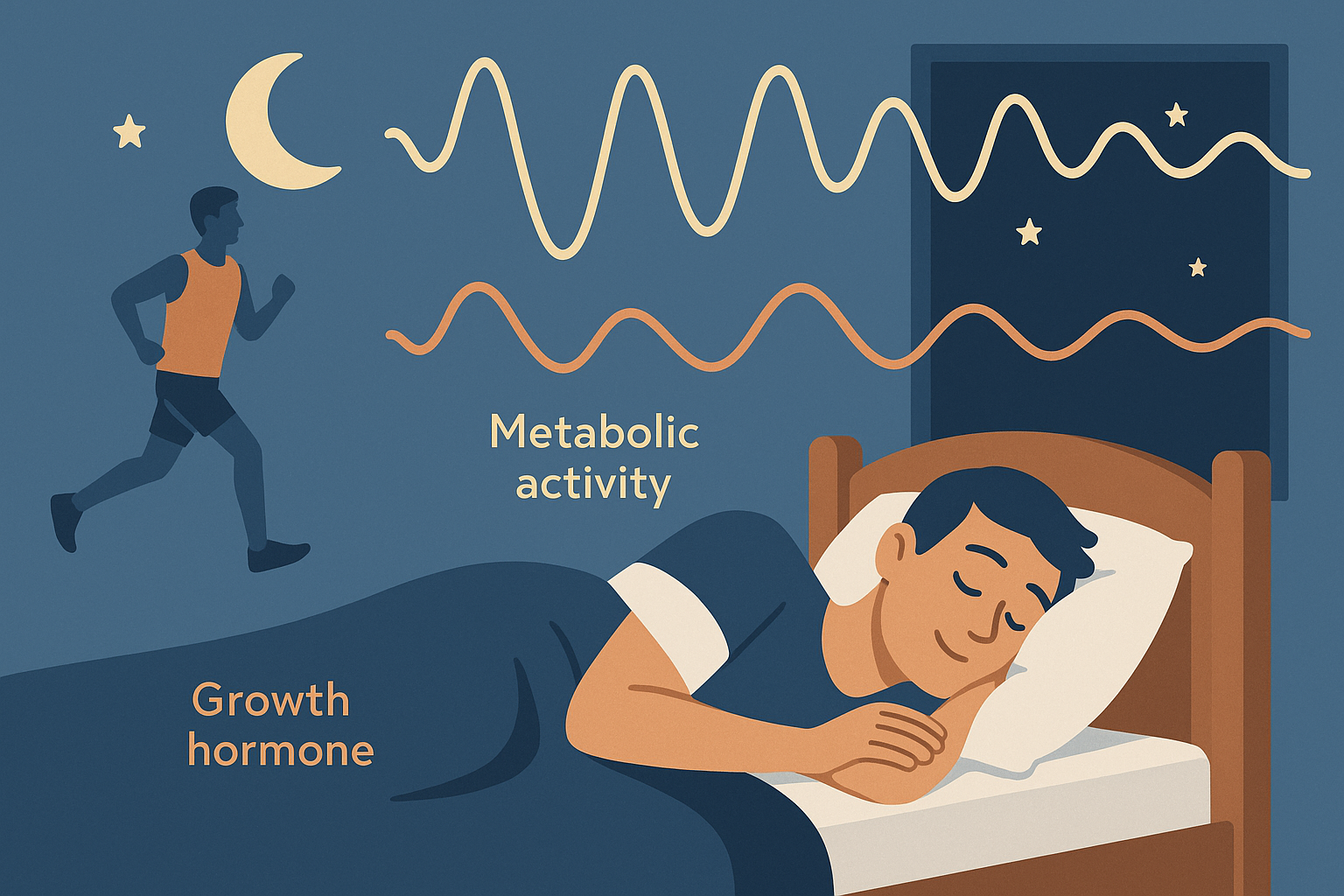
Ready to optimize your jumping jack routine with clean, science-backed nutrition support? Organic Authority’s carefully vetted supplements and collagen products can help fuel your workouts and support recovery, ensuring you get maximum metabolic benefit from every movement. Check out our wellness collection to complement your personalized fitness approach.
Final Thoughts
Look, understanding how many calories 100 jumping jacks actually burn isn’t about becoming obsessed with numbers – it’s about working smarter with your unique body. I’ve learned that those generic fitness calculators miss so much of what actually matters: your muscle fiber makeup, your natural daily rhythms, your form, and tons of other factors that can literally double or halve your results.
The most powerful thing here isn’t any single trick or hack. It’s realizing that your body has its own metabolic fingerprint, and once you figure out how to read it, you can make every workout actually count. Whether you’re burning 8 calories or 18 calories per 100 jumping jacks depends on stuff you can actually control and optimize.
Start paying attention to when you feel most energetic, how different temperatures affect your workouts, and what happens when you focus on explosive movement quality instead of just going through the motions. Your body is constantly giving you feedback about what works best for your metabolism – you just need to start listening to it.
The bottom line? Stop trusting those one-size-fits-all calculators and start experimenting with your own body. Try morning workouts versus evening ones. Play with your pre-workout nutrition timing. Focus on explosive form instead of just getting through the reps. Track how you feel and what seems to work best for you.
Your metabolism is unique to you, and once you start working with it instead of against it, those 100 jumping jacks can become way more effective than you ever thought possible.

